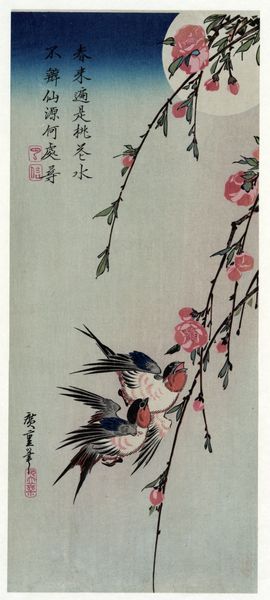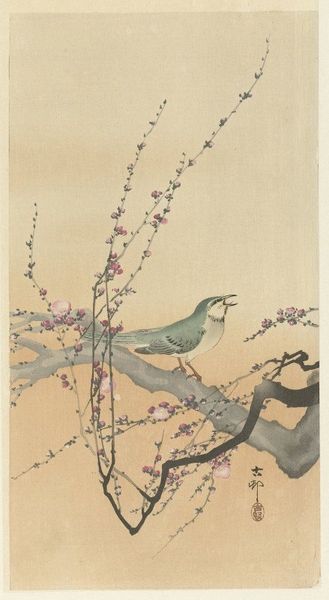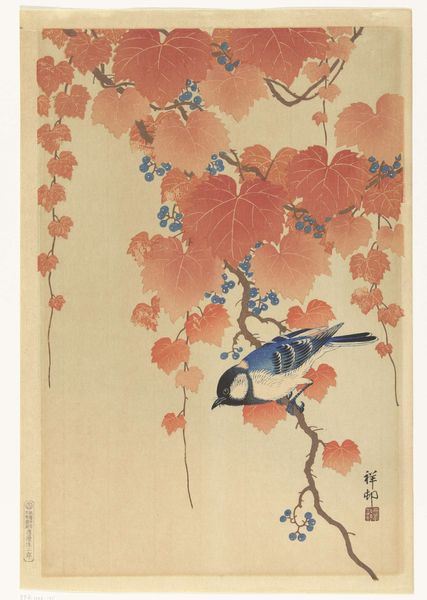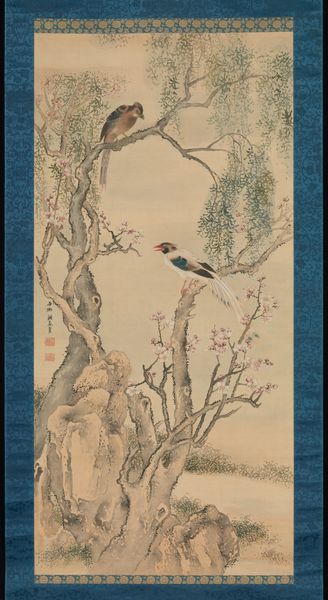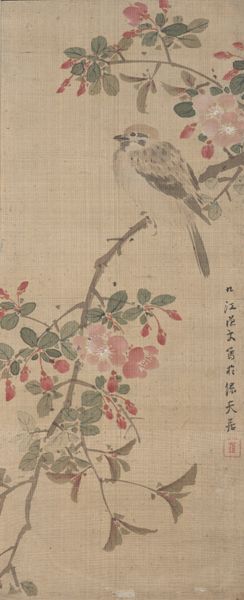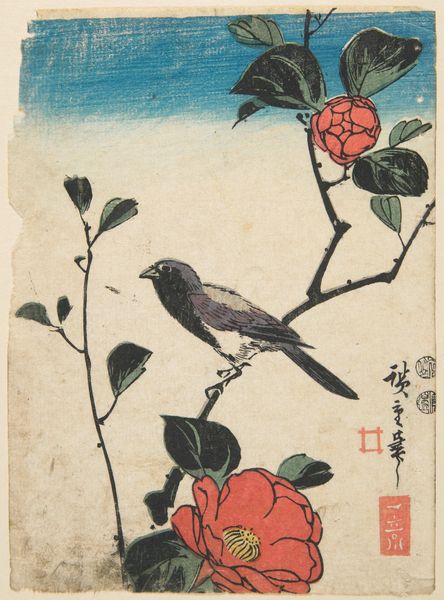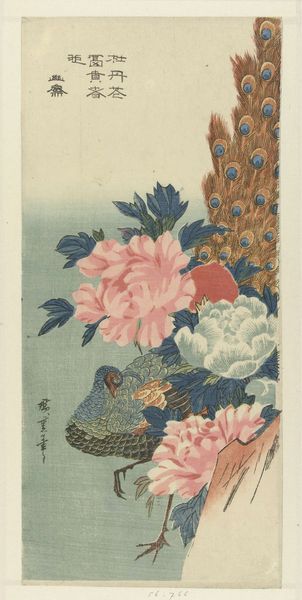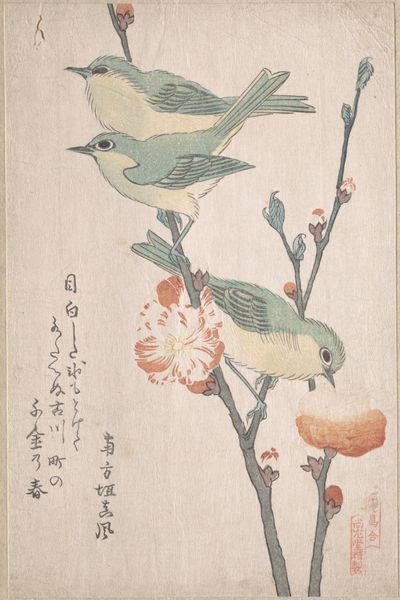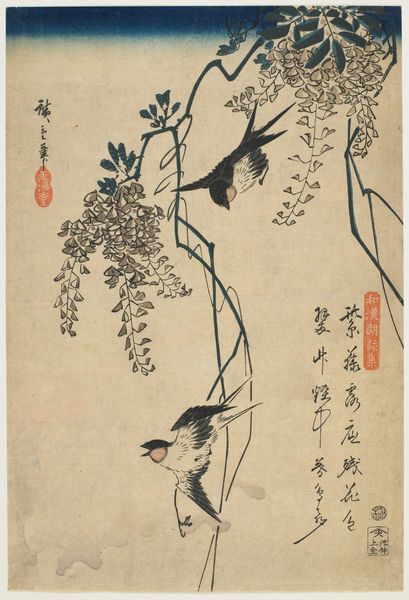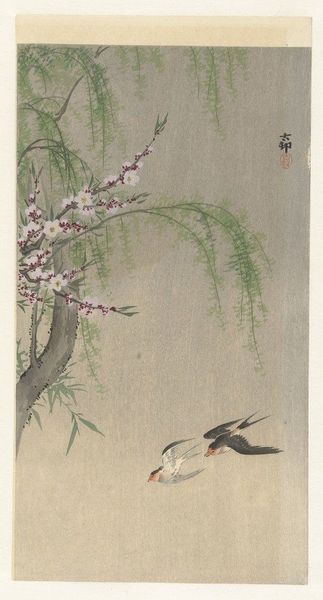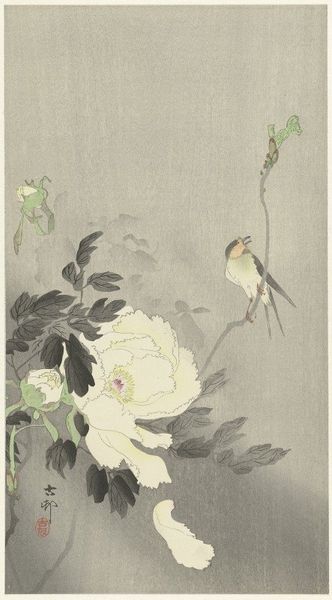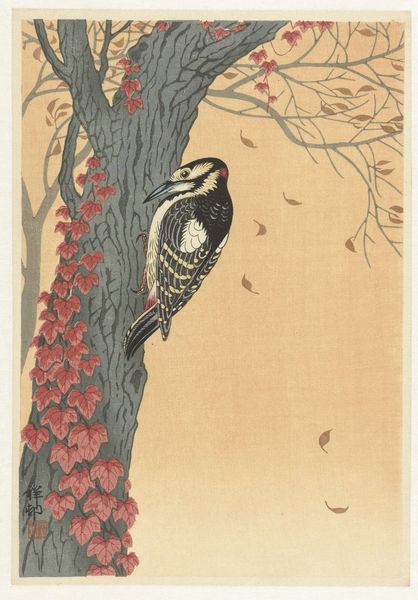
Dimensions: 13 1/16 x 8 5/8 in. (33.1 x 21.9 cm) (image, sheet)
Copyright: Public Domain
Curator: Welcome. Here we have a woodblock print entitled "Willow", made around the 1870s by Utagawa Hiroshige III. It is currently housed here at the Minneapolis Institute of Art. Editor: It's a very delicate scene. The soft pink of the cherry blossoms juxtaposed against the subtle gray branches creates such a serene atmosphere. There is a feeling of ephemerality... something transient about it. Curator: That sensation of transience certainly resonates with the concept of Ukiyo-e art, “pictures of the floating world,” which frequently depicted ephemeral beauty and everyday life. Speaking of, let’s consider how this particular work exemplifies that. The meticulous carving evident in the depiction of each individual cherry blossom speaks to a time-intensive labor process. Editor: Precisely! We should acknowledge the process—the carving of the woodblock, the layering of inks... You can see how the craftsman imbued the final product with extraordinary details using just a few colors, predominantly the striking pinks and soft greens. It's a material accomplishment in the history of printing. I am drawn to how they even allowed some of the wood grain to remain subtly apparent in the final print. Curator: Notice the skillful application of line, the starkness that gives such definition to those avian forms, against the more gently rendered petals of cherry blossom. The interplay between form and the flat picture plane is something I find endlessly engaging. These are the structural aspects that lead to a unique aesthetic effect. Editor: Yet those choices were shaped, were they not, by the demands of mass production. By creating an efficient repeatable process. So although this image seems naturalistic, its artificiality lies precisely in those layered planes. Curator: The composition overall gives a very light impression, it allows for a gentle observation of nature. It invites us to look closer into the subtleties that compose such a work of art, to interpret beyond our initial glance and to decipher its silent communication with us. Editor: Ultimately it speaks to a broader historical and artistic exchange. What appears initially as a simple scene hides an intricate network of labor, consumption, and social history. Curator: So much to unpack from one single image, wouldn't you agree? Editor: I would concur; a window into both form and production, aesthetics and process, all inextricably linked.
Comments
No comments
Be the first to comment and join the conversation on the ultimate creative platform.
